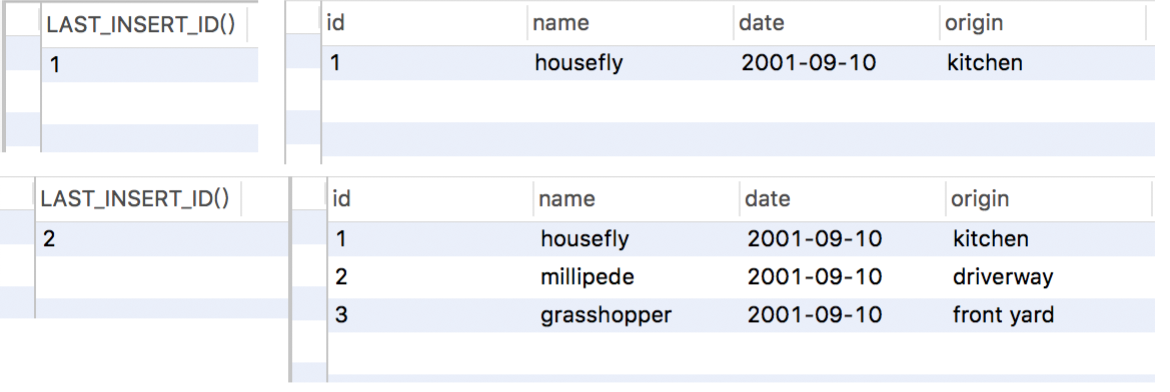mysql序列是一组整数:1,2,3....,由于一张数据表只能有一个字段自增主键,如果你想实现其他字段自动增加,就可以使用mysql序列来实现。
使用auto_increment来定义列
drop table if EXISTS test_autoincrement ;
create table `test_autoincrement`(
`id` int UNSIGNED not null auto_increment,
PRIMARY KEY (id),
`name` varchar(20) not null,
`date` date not null,
`origin` varchar(30)
);
insert into test_autoincrement (name,date,origin) values
('housefly','2001-09-10','kitchen');
-- 使用last_insert_id() 可以查看当前操作的次数
select LAST_INSERT_ID();
select * from test_autoincrement;
insert into test_autoincrement values
(null,"millipede",'2001-09-10','driverway'),
(null,"grasshopper",'2001-09-10','front yard');
-- 即便插入多行,也只显示插入第一行时产生的值
select LAST_INSERT_ID();
select * from test_autoincrement;
重置序列
先删除列,再添加列
drop table if EXISTS test_autoincrement ;
create table `test_autoincrement`(
`id` int UNSIGNED not null auto_increment,
PRIMARY KEY (id),
`name` varchar(20) not null,
`date` date not null,
`origin` varchar(30)
);
insert into test_autoincrement (name,date,origin) values
('housefly','2001-09-10','kitchen'),
("millipede",'2001-09-10','driverway'),
("grasshopper",'2001-09-10','front yard');
alter table test_autoincrement drop id;
select * from test_autoincrement;
alter table test_autoincrement add id int(3) UNSIGNED not null auto_increment FIRST,
add primary key (id);
select * from test_autoincrement;
设置序列的开始值
建表时设置序列值
create table `test_autoincrement`
(`id` int(3) UNSIGNED not null auto_increment,
primary key (id),
`name` varchar(20) not null )
engine=innodb auto_increment=100 charset=utf8;
insert into test_autoincrement values
(null,"tom"),
(null,"jerry");
select * from test_autoincrement;